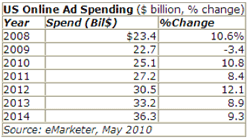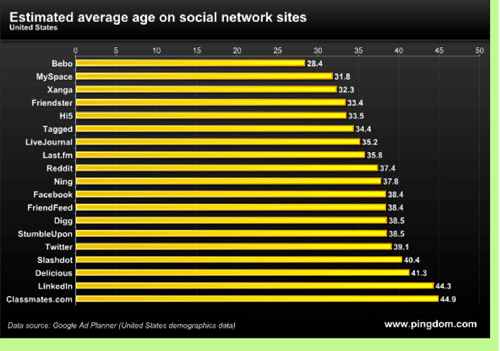About Thinking Creatively
Thinking Creatively is about taking a step back…when you want or need to think strategically and creatively about your business…or about your customer’s business…or about a solution to a challenging business problem. The goal is to be one part inspiration and one part motivation. We hope to provide – over time -- thought-provoking advice, tools, ideas and company profiles that help get you to your next breakthrough. Your feedback and interaction is invited, welcomed and encouraged.
Thinking Creatively is made possible by the support of GMC Software Technology. Normally such features are for "Premium Members" only. However, because the topic is so timely and essential to all executives in the industry we asked GMC Software Technology to provided support for this series. Their support allows us to to present these articles free for all WhatTheyThink.com members.
In a previous article, I talked about a powerful way to propel your company into the future... by creating a Unifying Business Idea (UBI). The purpose is to create a company strategy defined by 3-7 well conceived words - crafting an idea that defines, governs, aligns and energizes the business. The best UBI is one where people can talk to ten levels of meaning.
One of the key inputs to a Unifying Business Idea is to look at trends... analyzing "what's in the air". What this does for you strategically is to help position your business for where the industry is headed.
So in this article, I'd like you to consider some trends that extend out from four competencies that every printer has to exhibit, in one way, shape or form... and consider the possibilities of how these trends could play out three, five or even ten years from now. We'll look at trends in: 1) Communications spending; 2) Social media, 3) Personalization; 4) Manufacturing.
Category #1: You're in the communications business... it helps to know where that business is headed. And the growth is clearly online.
In one way, shape or form, what you produce has a communication function to it. This holds true whether you're producing a piece that promotes a product, service or event, or a transactional communication that supports a business relationship. So it helps to know where the world of communications is going as you consider where to focus your business.
Ad spending trends point to a clear path
Here is a chart - courtesy of the Center for Media Research - that projects the increases in online advertising spending:

This enthusiastic outlook - including a 10.8% increase in online ad spending in 2010 - compares to bleak forecasts for overall ad spending. A range of forecasts reported in the NY Times projects a decline in spending of as low as 4.3% and an increase no greater than .2%.
Looking deeper, there is a more specific place to focus, online:

What stands out like a sore thumb - or rather a bright green pasture - is the growth in online video, as the format exploding in growth. While online video will average 40% growth in the next five years, email will average about 2.5% growth over the same time frame.
The message?
If you have a chance to branch into the video promotion and production business, you will be moving with the trends.
Category #2: The way we will connect with others has irreversibly moved to social media. And it's not just for kids anymore.
There is nowhere to hide from all the chatter and focus on social media. Yet there is one amazing trend to understand, given the origins of MySpace as a haven for alternative music lovers and Facebook as the way to meet people who were headed to the same college as you (or your kids).
The average age of users on Facebook is... 38.4 years old. The chart below shows the average age of various social media sites... surprisingly, the average age on all but one is in excess of 30.

Another factor to understand about social media is the impact it is having on brands and how companies need to connect with their customers.
Conclusion?
If you had illusions that social media was a "young person's domain", think again. If you are looking to help marketers and communicators engage successfully with their customers and prospects, acquiring a competence in social media is a must.
Category #3: Personalization... while the advent of four color personalized communications created a wave of innovation in the graphic arts industry, consider how valuable "personalization expertise" will be in the next ten years.
Sometimes it's helpful to look outside your own domain to gain perspective. This is true when the topic of personalization comes up. Consider the impact that personalization is going to have on the health care industry. Specifically, we're entering the "DNA Era" of health care.
From the magazine "Venture Beat": Stanford bioengineer Stephen Quake has built a machine he used to decode, or "sequence" his own DNA. Quake mapped out the 2.6 billion-letter chain of DNA stored inside his body's cells late last year, then prepared a scholarly write-up for the British journal, Lancet. Quake's setup did the job in four weeks for around $50,000. By the end of the year, the price may very likely drop to $10,000.
Quake's DNA, which a team of researchers analyzed for 55 medical conditions, pointed to potential heart trouble down the road. The cause-and-effect relationships between illnesses and genes are vague. Instead, scientists have calculated statistical correlations. If you have a certain sequence in your DNA, you are more likely to develop a specific medical condition.
According to The Futurist Magazine, the race for biomedical and genetic enhancement will -- in the twenty-first century -- be what the space race was in the previous century. Humanity is ready to pursue biomedical and genetic enhancements, says UCLA professor Gregory Stock in a paper titled "Thinking Globally, Acting Locally, Living Personally."
The implication over the next 10-15 years?
Making investments in personalization technologies, including how to link attitudes and behaviors, could potentially earn you a seat at the table with future-focused health care marketers, who will be spending heavily on communications.
Category #4: Manufacturing goods and services is moving to a more personalized model as well. Could you be a participant?
Mass customization gained great legitimacy when companies like Dell Computer Corp. built a $60 billion dollar business manufacturing computers that were made to order. There are several trends that offer those of you in the graphic arts industry - those who excel at the manufacturing function -- a window into a new kind of manufacturing, if you allow your mind to envision the possibilities.
First, let's consider where personalized manufacturing is headed. According to futurist and author Thomas A. Easton, in his article on "The Design Economy", he highlights a business model called The Ponoko Business model. The company's website describes the model simply: This is... "where creators, digital fabricators, materials suppliers and buyers meet to make (almost) anything." And everything includes jewelry, furniture, toys, electronics, lighting and anything to outfit an office.
Easton also talks about the field of 3D printing. And this is not just about "entertainment" in 3D. Front and center are organizations like http://reprap.org. Here's a quote from their site: While rapid prototyping dominates current uses, 3D printers offer tremendous potential for production applications as well.[2] The technology also finds use in the jewelry, footwear, industrial design, architecture, automotive, aerospace, dental and medical industries. Another company making equipment to build prototypes is http://desktopfactory.com. On their website they proclaim: "The Desktop Factory 3D printer builds robust, composite plastic parts that can be sanded and painted, or flamed when desired. No post process or chemical infiltration is needed to cure or strengthen objects." In other words, for $4,995, you could be in the business of manufacturing of prototypes for industrial designers, among other customer groups.
The possibilities?
If you let your mind run free for a few moments, you could begin to participate in a handful of high growth, future focused industries.
If you find this topic of trends and envisioning new growth markets helpful or interesting, please send me an email and I'll plan to cover more in future articles.










